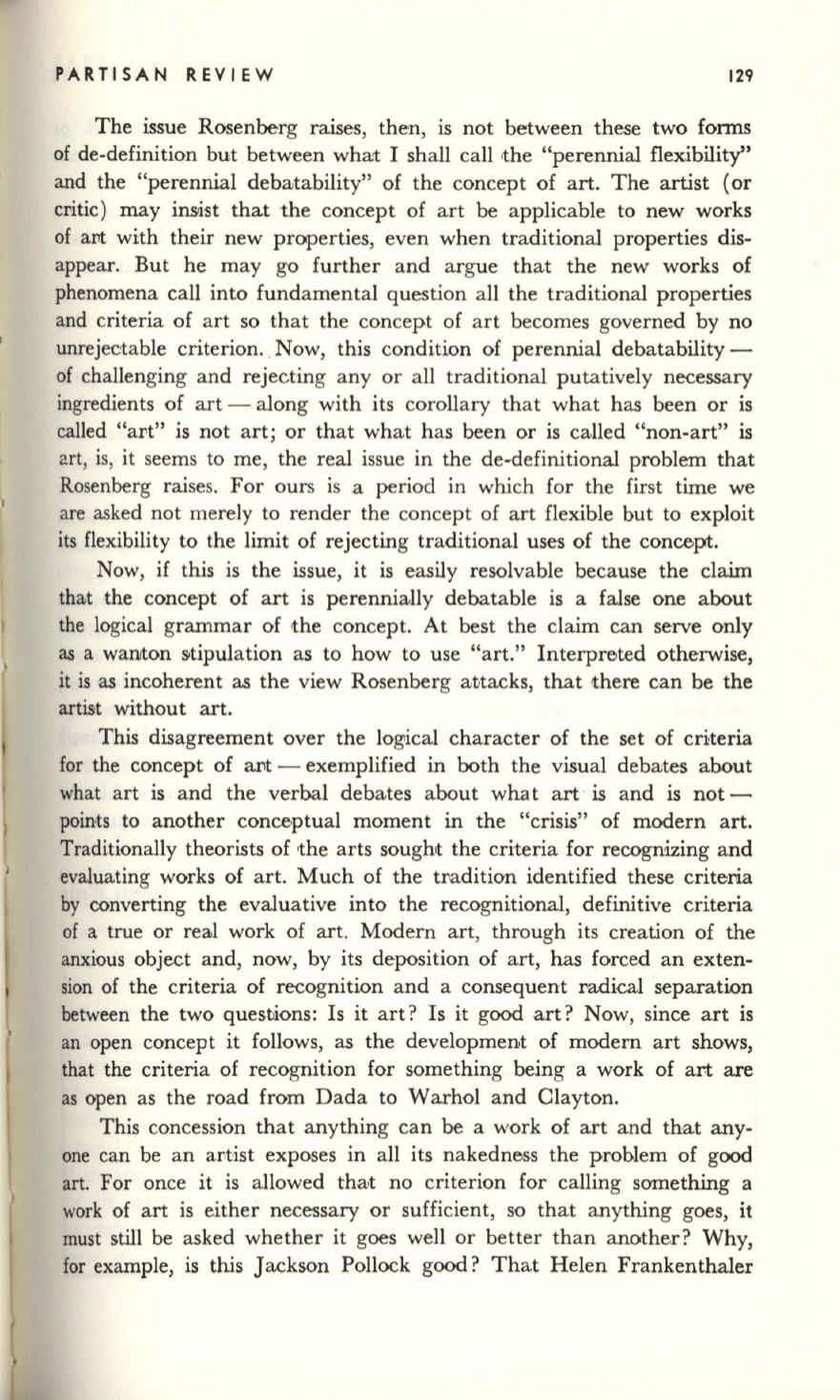
PARTISAN
REVIEW
129
The issue Rosenberg raises, then, is not between these two fonns
of de-definition but between what I shall call the "perennial flexibility"
and the "perennial deba.tability" of the concept of art. The artist (or
critic) may insist that the concept of art be applicable to new works
of am with their new properties, even when traditional properties dis–
appear. But he may
go
further and argue that the new works of
phenomena call into fundamental question all the traditional properties
and criteria of art so that the concept of art becomes governed by no
unrejectable criterion. .Now, this condition of perennial debatability–
of challenging and rejecting any or all traditional putatively necessary
ingredients of art - along with its corollary that what has been or is
called "art" is not art; or that what has been or is called "non-art" is
art, is, it seems to me, the real issue in the de-definitional problem that
Rosenberg raises. For ours is a period in which for the first time we
are asked not merely to render the concept of art flexible but to exploit
its flexibility to the limit of rejecting traditional uses of the concept.
Now, if this is the issue, it is easily resolvable because the claim
thCllt the concept of art is perennially debatable is a false one about
the logical grammar of the concept. At best the claim can serve only
as a WaJlJton stipulation as to how to use "art." Interpreted otherwise,
it is as incoherent as the view Rosenberg attacks, that there can be the
artist without art.
This disagreement over the logical character of the set of
cr~teria
for the concept of art - exemplified in both the visual debates about
what art is and the verbal debates about what
art
is and is not–
points to another conceptual moment in the "crisis" of modern art.
Traditionally theorists of the arts sought the criteria for recognizing and
evaluating works of art. Much of the tradition identified these criteria
by converting the evaluative into the recognitional, definitive criteria
of a true or real work of art. Modern art, through its creation of the
anxious object and, now, by its deposition of art, has forced an exten–
sion of the criteria of recognition and a consequent radical separation
between the two questions: Is it art? Is it good art? Now, since art is
an open concept it follows, as the development of modern art shows,
that the criteria of recognition for something being a work of art are
as open as the road from Dada to Warhol and Clayton.
This concession that anything can be a work of art and that any–
one can be an ar,tist exposes in all its nakedness the problem of good
art. For once it is allowed that no criterion for calling something a
work of art is either necessary or sufficient, so that anything goes, it
must still be asked whether it goes well or better than another? Why,
for example, is this Jackson Pollock good? That Helen Frankenthaler


